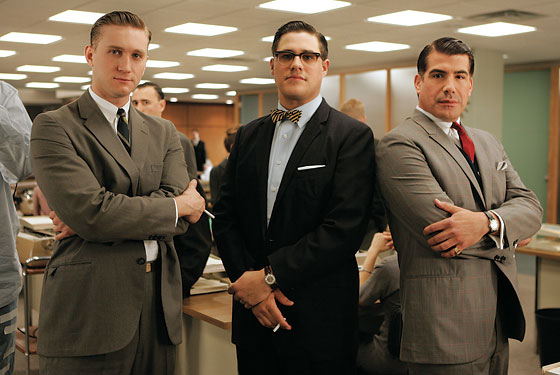
Forget for a moment that Mad Men is the best new series on television, a stylized melodrama in which sleek repressives collide like sexy marbles—at once a critique of and a nostalgic wallow in its naughty milieu, the advertising offices of early-sixties Madison Avenue. What really fuels the series is pure, undiluted mid-century Manhattan Glamour. With its intoxicating styling and set design, Mad Men is a super-crisp reflection of what many New Yorkers think of as our own personal alternate universe, a place where cocktails glitter, men wear fedoras, and lipstick leaves dark stamps on everything it encounters. From a vampish secretary’s tomato-red skirt to a pathetic avocado-hued chip-and-dip-bowl wedding present, the show is heaven for design geeks and retro romantics alike.
It pays off for Manhattan real-estate fetishists, too, showcasing retrospectively hilarious details like a $34,000, 1,500-square-foot apartment on Park and 83rd and reveling in panoramas of the El Morocco lounge and the glorious lobby of the Broadhurst Theater, where Don Draper and his wife catch a performance of Fiorello.
Of course, plenty of TV shows have been love letters to their versions of New York, from Sex and the City’s first-date Xanadu to Seinfeld’s diner-studded Upper West Side. But Mad Men uses its aesthetic thrills for a deeper purpose: Its gorgeous, old-fashioned Madison Avenue is like a feverish anxiety dream about New York masculine power. Like Tony Soprano, Don Draper is an icon of male confidence—a cynic with smarts who, like so many New Yorkers, has erased his own history and learned to control the city that would swallow him up. Each day, he dominates a midtown playground, one outfitted with eight-martini lunches and panty raids that count as flirtation, not harassment. Unlike, say, Entourage, Mad Men is willing to acknowledge its rat pack’s ugly streak. But even a woman can watch these guys, blotto on crème de menthe at a wild office party, and think—with a twinge of uneasiness—Now, that’s freedom.